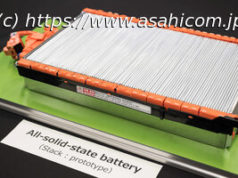英語で日本の 文化・ 習慣を紹介する……。 難しそうですが、 中学英語の レベルで十分対応できます。 今回は、 日本の 美しい年中行事「ひなまつり」 を英語で説明してみましょう。
3月3日はひな祭りです。
We have the Doll Festival on March 3.
→ひな祭りは「Doll’s Festival」とか「Girl’s Day」とも言います。
女の子の健やかな成長と幸せを祈る日です。
It’s the day to pray for healthy growth and happiness for young girls.
→to pray以下が the day を説明しています。
「桃の節句」とも呼ばれています。
It’s also called Momo-no-Sekku or Peach festival.
→「or」には「または」と別の名前で言い換える用法があります。つまり、orを使えば、日本語名と英語での説明が簡単に表現できるんですね。
女の子のいる家庭では、「ひな人形」と呼ばれる人形を飾ります。
Most families with girls display dolls called Hina-ningyo.
→「called Hina-ningyo」は「dolls」を後ろから修飾しています。
昔は厄払いのために、川や海に紙人形を流していました。
Long ago, people threw paper dolls into rivers and in the sea to drive away evil spirits with them.
→「evil spirits」は「悪霊や邪気」、「drive away」は「~を追い払う」、という意味。「紙人形と一緒に邪気を追い払う=厄払い」となります。「to drive away……」以下は「目的」を表す不定詞で、「~するために」。
江戸時代に、人形を飾るようになりました。
People began displaying dolls in the Edo period.
→江戸時代は有名なので、そのままで通じるでしょう。
人形は宮中の様子を表しています。
The dolls depict the imperial court.
→「depict」は「描写する」という意味。
人形たちは、美しい伝統的な宮中の衣装を身に着けています。
They are dressed in beautiful ancient court costumes.
→「be dressed in」で「身に着けている」という意味です。






